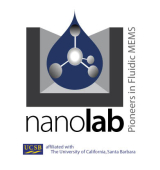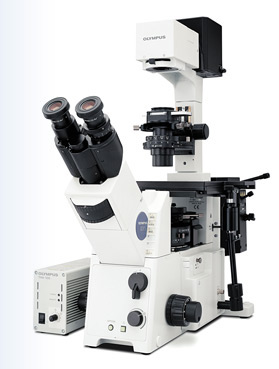MAT 594 - 2008S
JAVIER VILLEGAS -THE NANOSCALE DEVICE LABORATORY

The nanolab is a research laboratory in the mechanical Engineering Department, is placed in engineering science building 2328 and is directed by Dr. Sumita Pennat[1]. The principal activity of the lab is the study of nanoscale system and techniques. Optical devices are used to acquire microscopic data, computational analysis are applied to digitalized images to get relevant conclusions. This document describes part of the job done by the pos-doctoral researcher Maria Napoli
The nanolab is equipped with the inverted olympus microscopy IX71.

In this device, up to four ports can have simultaneous access to a primary image, also the system can accommodate multi-wavelength, advanced fluorescence techniques. [2].
A digital camera Andor Ixon [3] is attached to the system.

The camera is connected by firewire to a computer and is taking pictures in 100ms-200ms intervals. images are grayscale 512 x 512 but lower resolution can be use in order to get better signal to noise relationship. Sequences of microscopical images are used to test the properties of micro and nano channels.
The grayscale video (originally a proprietary SIF format) is converter to a series of images and is read in Matlab. To find the objects of interest in the sequence the channel is segmented with row averaging of a manually selected image, and then images are converted to a one dimensional sequence of signals with column averaging. The problem of find whiter objects is turn to a peak finding problem.
Velocities of objects in the channel are compared to theorical models to validate the potentials of the technique.
Sample Video from one of the experiments performed in the nanolab (courtesy of Maria Napoli). fluorescine and bodipy (two charged dyes), fluorescently labeled, traveling along one channel under an applied electric field.
[1] Nanolab page
http://www.engineering.ucsb.edu/~nanolab/
[2] Olympus America
http://www.olympusamerica.com/seg_section/product.asp?product=1023&p=72
[3] Andor Technology
http://www.andor.com/scientific_cameras/ixon/
Thanks to:
Maria Napoli
napoli at engineering.ucsb.edu
David Boy
